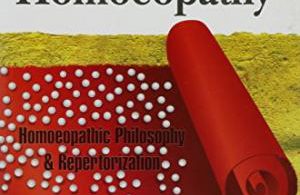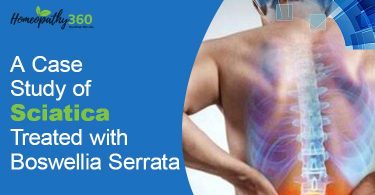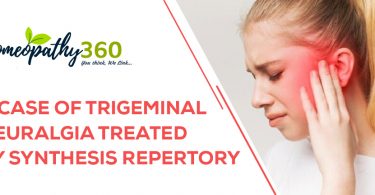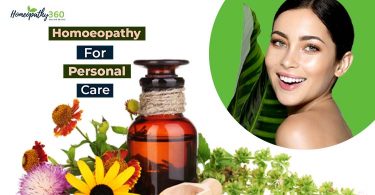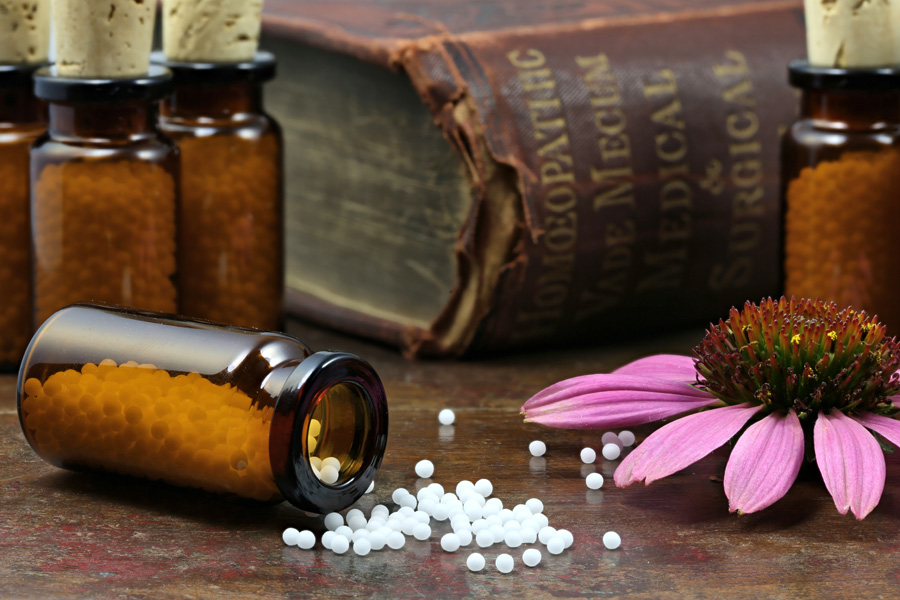
Dr.B.S.Suvarna
Arthritis is the most common disorder affecting the joints of the body . there are many different kinds , but the three main varieties are rheumatoid , osteo-and gouty arthritis . the first two are by fat the most common , even now after many years of research , the actual causes of arthritis are not fully understood and cures are no more likely now than they were 50 years ago , each joint in the body is lined , with synovial membrane which produces a lubricating fluid which allows the joints to function property with little or no pain , arthritis of all kinds destroys . this process and damages the joint space , leading to bone rubbing against bone which produces the pain swelling and discomfort characteristics of the condition where as osteo arthritis is usually considered a function of” wear and tear “ and occurs as a result of increasing use and old age ,rheumatoid arthritis is a disease of the whole body and can affect other organs as well as the joints , arthritis can occur in other conditions including Reiter’s syndrome , a sexually transmitted disease ankylosing , spondylities and ulcerative colitis.
OSTEOARTHRITIS : This is a degenerative condition of the joints resulting from destruction of cartilage and synovial fluid leading to loss of space between the bones . It is a condition of old age although it can be brought about by previous injury or polio , so that the young can also suffer , it generally involves the large weight –bearing joints –the hips and knees primarily –although any joint in the body can be affected , in the spine it is the major cause of low back pain and neck ache as a result of the loss of vertebral discs that act as shock absorbers in the spinal column . it can affect the hands , particularly the joints of the thumbs . it tends not to spread from one joint to another and is more common in women than men . it is more prevalent in the obese (because weight increases pressure on the joints )and is also common in athletes who exercise regularly . joggers are more prone to arthritis of the feet . no other organs of the body are affected , although the muscles around the joints may become wasted and weak.
RHEUMATOID ARTHRITIS : This is a generalized inflammatory condition affecting young adults and the middle aged . it occurs commonly in Europe and North America and in temperate climates . A special variety (stills disease ) occurs in young children . it is generally progressive and affects other parts of the body including the muscles , skin, eyes, heart and sometimes lungs , it is associated with low grade anemia and is characterized by acute episodes when the joints are swollen ,hot and painful . there is also a temperature , 20 % of sufferers only experience one episode but the majority will have relapses and remissions , the most common joints affected are those of the hands and wrists but like osteo arthritis , any joint can be involved , the actual cause is unknown but certain factors are thought to play a part , including post-viral infection and stress . An “arthritis personality“ has been identified ,this is some one who has not expressed grief in the loss of husband/wife /child or is bottling up anger . Dietary factors are also felt to be important and many alternative practitioners will pay great attention to diet.
Allergies are also common . Gouty arthritis , this form of arthritis occurs when excess uric acid is circulating in the blood which then crystallizes out into the joints . producing acutely painful and swollen hot joints , typically in the big toe , but also knees and hands , it is generally treatable and does not spread like other forms .
1.pain, stiffness and redness especially early in the morning .
2.wekness and wasting of muscles .
3.tenderness and fever .
4.coldness of hands and feet .
5.trapped nerves in osteo-arthritis can lead to tingling in hands and the condition called carpet tunnel syndrome . which causes numbness and pain in the thumb , index and middle fingers, diagnoses is very important to help guide you in your own program , so a visit to your doctor is essential . alternative therapies have a large part to play and can help reduce the acute disease as well as prevent recurrences .
1.lose weight .
2.begin a relaxation and stress reduction program .
3.yoga and gentle exercise , including swimming will help
4.if having difficulty with emotional responses to major life events (death/divorce etc) consider seeking a counselor . diet can be of vital help.
ANTI-ARTHRITIS DIET
1.reduce dairy products
2.cut out red meat and all meat if possible.
3.avoid very hot and very cold foods
4.cut out coffee and tea
5. take up herbal tea
6.reduce white flour products
7.flid fast for one day a week :avoid all solid food and drink clear liquids , such as herbal tea , water , apple juice
8.get advise on minerals and vitamin supplements
9.avoid acid fruits , including citrus fruits and tomatoes
10.take lots of vegetable juice celery ,carrot or beetroot
11.experiment with excluding wheat products from your diet.
A naturopathic therapist would explore your life style and prescribe the diet routine outlined above , a controlled fast can be of great help both in acute phase and to prevent recurrence , as can a long term balanced vegan diet , you will be advised to take up gentle stretching exercises and if your practitioner is trained in cranial osteopathy . this may well be effective.
RHEUMATISM AND ARTHRITIS
Although there are over 250 different joint disorders , homoeopathy groups them into the general classification of rheumatism because the picture of these illnesses is very similar , this section there fore contains those medicines most suited to an illness which has joints , muscle or tendon pain , usually stiffness and some times deformity of one or more joints . the most common form of rheumatism is osteoarthritis which is produced by the wear and tear that joints suffer during their use , it is over twice as common as rheumatoid arthritis where the joints become inflamed and painful , if any doubt exists over the diagnosis or treatment , a doctor should be continued , medical help may be needed to treat these conditions .
Arthritis means “inflammation of a joint” .It refers to a group of more than 170 joint diseases that can cause pain , stiffness and swelling (may or may not be present)in the joints . The most common types of arthritis are:
RHEUMATOID ARTHRITIS
Rheumatoid arthritis (RA) is an inflammatory disease that causes pain , stiffness , loss of function and deformity in the joints .
As it is a systematic disease , areas out side the joint may also get involved for example , membranes surrounding internal organs such as the heart lungs or eyes RA tends to run in families more over women are 3 times more prone to develop RA , but with advanced age the man/woman ratio almost equal .
- it usually affects one before 50 years of age but it can begin by the age of 25 , some times it is seen in children too
- may develop suddenly with in a period of weeks , months but it is usually gradual (slow on set )
- involves the joints symmetrically i.e., joints on both sides of the body are involved
- usually affects the small joints of the hand , foot wrist , elbow , shoulder or ankle
- causes inflammation , resulting in pain and swelling of joints which become red warm and tender
- early morning stiffness , lasting for more than one hour
- causes symptoms in other organs of body besides the joints such as lungs , heart and eyes
- may cause over all tiredness , weight loss and occasional fever
- finger deformities are characteristics of RA
DIAGNOSIS
Various tests to evaluate and diagnose the condition include
- blood tests for ESR (increased in RA) and blood cell count (shows increased white blood cells and platelets because of inflammation)
- serology test for rheumatoid factor (an abnormal antibody) which is present in 70-80% of RA cases , that the joint has suffered and later to monitor the progress of the disease .
- synovial fluid examination to role out infection .
Homoeopathic remedies reduce inflammation and provide symptomatic relief
- take adequate rest acutely involved joints must be given rest or splint to reduce inflammation
- regular exercise to strengthen muscles (as advised by the doctor) surrounding the involved joints
- yoga and other alternative therapies have been scientifically documented to complement the use of drugs
- control body weight
- take a diet low in fat , moderate in sugar , rich in gamma linolenic acid and omega 3 fatty found in nuts and fish , primrose oil
LOW BACK PAIN
Over 80% of humans in the industrial world experience low back pain , some time in their lives . In fact back pain is the most frequent cause of activity limitation in people younger than 45 years .
It generally remains a benign condition , some 60% of patients recover in a week and about 90% in 6 weeks .
CAUSE OF LOWER BACK PAIN
Faulty posture habit , especially seen in people who tend to sit for a long time at one place ( i.e., those working with computers )
- osteoporosis ( especially in post menopausal women)
- osteo arthritis (especially in old people )
- tuberculosis
- injury to spine
- cancer prostate (especially in old age)
- stress also plays an important role in causing low back pain
INVESTIGATIONS
X-ray of spine , MRI (for tumor) bone densitometry (for thinning of spine ), radionuclide scanning for tumor and osteomyelitis –infection of the inner part of bone i.e., till bone marrow) may be advised.
MANAGEMENT
Key elements of the conservative treatment for low back pain include ;
- taking medication for pain regularly , as advised
- maintaining proper body weight
- avoiding lifting heavy weights
- using the legs rather than the back where lifting is unavoidable
- maintaining proper posture while sitting and standing , do not slouch
- using a chair with arm rests
- rising from the bed by first rolling to one side and then using the arm to push to an upright position
- surgery may be needed in cases of tumors or evolving neurological problem
CERVICAL SPONDYLOSIS
Cervical spondylosis is a degenerative disease , characterized by abnormal growth of bones (osteophytes ) of the spine in the neck region (cervical vertebra) herniation (protrusion) and deposition of calcium in the cushions (intervertebral disc) present between the cervical vertebrae .
This phenomenon may cause compression of nerves in the neck region , resulting in symptoms of cervical spondylosis . the nerve roots commonly involved are C5 and C6 and C7.
SYMPTOMS
Usually a person may have no symptoms , unless there is compression or stretching of cervical nerves or spinal cord .
- pain and stiffness in the neck , reducing the range of movement especially rotation and lateral (sideways) movement of the head
- neck pain may also radiate to the shoulder or the arms and usually get worse with movement of the neck , coughing sneezing or straining
- head ache , especially at the back of head
- tingling and burning sensation or loss of sensation at shoulder arm or fore arm
- nausea , giddiness and vertigo, tinnitus (ringing in ear)
- muscle weakness or wasting of muscles of the shoulder , arm or hands
- weakness in lower limbs and loss of control of the bladder and bowel movements (if spinal cord is compressed )
INVESTIGATIONS
- X-ray of the cervical spine (neck)which shows degenerative changes , osteophyte formation and narrowing of disc space
- myelogram(imaging done after injecting dye into the spinal column) may identify the site and extent of compression
- CT scan and MRI are the better options for diagnosis
MANAGEMENT
It can be judiciously controlled in the following ways ;
- neck exercises (with doctors advise) to strengthen the muscles and increase the range of movement , exercises may be learnt from a physiotherapist and practiced at home regularly .
- restriction of neck movements by means of cervical collar may relieve pain
- avoid strain in the neck area
- avoid driving a car but if driving wear a cervical collar and avoid any jerky movements
- avoid bending neck for long hours , after every 2 hours take a 5 minutes break and carry out neck exercise prescribed by the physiotherapists
- pain killers and muscle relaxants9as advised by the doctor ) can also help in relieving pain
- neck traction (a process of pulling)with the help of a simple devise may also be recommended by the doctor to relieve pain
- short wave diathermy or transcutaneous electrical nerve stimulation (TENS) may be required only in severe cases , where there is significant loss of muscle strength or sensation or if the symptoms do not respond to the above measures .
GOUT;
Gout is known as the “diseases of kings’ as it is associated with rich food and alcohol consumption . it is a metabolic disorder characterized by abnormally high uric acid levels in the blood , which precipitates to form crystals in the joint spaces (very often the big toe ) and causes a sudden onset of pain swelling and redness inflammation.
Obese men 40-50 years of age are more likely to develop gout than women . it is often episodic in nature ; in an attack of gout typically builds over a few hours .a joint that seems perfectly normal suddenly becomes very painful , red and swollen . relapses and remissions (reappearance)are common . Alcohol tends to dicrease uric acid excretion and precipitate attacks of gout .
INVESTIGATIONS ;
Blood test for uric acid (which is increased)
X-ray shows small , well defined , punched out areas near the articular end of bone and with in the soft tissues . Synovial fluid examination to rule out infection . Presence of monosodium urate crystals in synovial fluid is an indicator of gout
MANAGEMENT ;
- colchicin is very effective for pain relief in acute gout but not used frequently due to its side effects
- these drugs decrease the blood uric acid levels by increasing excretion of uric acid in urine (probenecid and sulfinpyrazone)or reducing production of uric acid inside the body
- liberal fluid intake (up to 2.5 litres /day)is advised
- avoid purine rich food products like glandular meats(brain , kidney ,liver, heart etc.,) , meat extracts , sea foods , saridines , beans , peas , lentils spinatch oatmeal yeast and yeast based products.
- avoid alcohol completely
- avoid fasting
- maintain ideal body weight
- physiotherapy helps to improve joint movement , infact any disease management would remain largely ineffective with out the participation of an aware patient .
RHEUMATIC REMEDIES (HOMOEOPATHY)
Hahnemann had introduced two quite new remedies for rheumatism in bryonia and rhus tox , unlike many of the drugs he proved . even the indefatigable Richard Hughes failed to trace the source of this quotation . as for rhus tox , Hahnemann was right up to his date for that drug as it had only been introduced from America by the French doctor Dufresnoy in 1798 , two years after Hahnemann’s kite-flying article in Hufeland’s journal essay on a new principle for discovering the creative power of drugs
But later experience demonstrated that however effective , these two valuable remedies had proved to be there were still some cases of rheumatic disorder they could not relieve .
Further proving of new remedies were needed . in Europe Stapf , hahnemann’s favourite pupil published provins of colchicum , rhododendron and Sabina in his Aschiv while in America , Constantine Herring , another golden boy of Hahnemann’s proved Kalmia and phytolacca . Dr.Hale published his collection of proving of American indigenous remedies including actaea and caulophylum and the American society collated proving and toxicology of apis melli
Not all rheumatic conditions were covered by bryonia and rhus tox . Dr.Margaret Tyler gave a personal in her journal homoeopathy (Tyler 1934) A really bad stiff neck in which whole of the trapezius muscle and its attachments were involved , bryonia worse for movement –rhus tox worse on first movement and with its reputation for stiffneck and cimicifuga had been useless . it was as much as one could endure to slither down into the bed , the trapezius refused any side ways support to the head without sharp protest ; to wake in the night and slightly turn the head was an excruciating experience , one wondered how it would be possible to get up next day . Allen;s key notes were consulted –phytolacca occupies a middle place between rhus tox and bryonia and cures when these fail though apparently well indicated and it did and oh!! The joy , that night to be able to lie down to move the head and lift it and turn over with never a twinge.
ARTHRITIS AND HOMOEOPATHIC TREATMENT
Caulophylum is an indigenous plant in the United States and was used by Indian woman for difficult labour and dysmenorrhoea .It is surprising that when American homoeopaths proved it , they did not include a woman prover what did surprise them was that when a doctor proved it , he developed pain and stiffness in the small joints of the fingers and toes , caulophylum relieved rheumatic fever when no improvement had followed rhus tox or bryonia .
Hughes reported brilliant cures of inflammatory rheumatism of the hands and fingers . Royal stressed the very stiff fingers and Neat by suggested the caulophylum woman was irritable , strong minded of dark complexion ; while Allen noted “moth patches” on the face , similar to the pigmentation seen in sepia . Nash gave the 3rd potency of caulophylum for rheumatic pain in a pregnant woman and brought on severe uterine contraction , he changed to the 200th potency and the contractions ceased and the rheumatism was relieved . it is these spasmodic symptoms that distinguish caulophylum from actaea in dysmenorrhoea . caulophylum belongs botanically to the berberis family . We know berberis acts on the smooth muscle of the cureter and the bile duct , so it should not surprise us that caulophylum has an action on uterine muscle as an spasmodic , treat the dysmenorrhoea with caulophylum and the rheumatism is cured.
SYMPTOMS AND MEDICINES
The smaller joints , such as the hands and feet are those mainly affected . joints ache and swell and the feet are worse for walking —ACTAEA SPICATA.
Affected part feels very stiff and sore to the touch . joints swell ,making the over flying skin feel stretched and tight ,swelling is pale , joints become swollen –APIS MELLIFICA
Rheumatism that comes about from exposure to damp and cold with simultaneous muscle strain affected parts feels sore and bruised –ARNICA
Cutting lightning – like pains run along joints . joints are red , shiny and swollen and pain radiates through them . For rheumatism that is often brought on by getting head and neck wet or sitting with them exposed to a draught —–BELLADONNA
Rheumatism in the smaller joints , which develop nodular swellings—BENZOIC ACID
Acute rheumatism with hot ,shiny dark or pale red joints . For pain that is greatly aggravated by movement but that is relieved by external heat –BRYONIA ALBA
Rheumatism that comes on from working in water or damp surroundings , upper back and shoulders are the most affected areas —CALCAREA CARBONICA
Affected joints feel stiff and tight and lying on them makes them feel sore ,pain is worse from cold and is relieved by warmth ,restlessness at night ,with drawing pains in muscles ,ankles are also weak –CAUSTICUM
Severe almost intolerable pain with compulsion to get up and walk about –CHAMOMILLA
Symptoms mainly in muscles –CIMICIFUGA
Pain is worse in the evenings affected parts are swollen and dark red . disease moves from joint to joint and typically occurs in debilitated and weak persons —COLCHICUM
Rheumatism is worse in changeable weather , especially in damp cold conditions –DULCAMARA
For chronic cases with distorted and knobby joints. Joints are worse from movement and the tendons around them feel tight –GUAICUM
Pain travels upwards is worse in a warm bed ,and affects the smaller joints. Any swelling is slight for conditions where nodules form—LEDUM PAL
Relief from slow ,gentle movement –LYCOPODIUM
Rheumatism is in the right shoulder ,rheumatism is worse in bed or after walking and better from warmth—MAGNESIA CARBONICA
Pain constantly moves from joint to joint ,worse in the evening and from warmth but relieved by cold , severe pain that leads to compulsion to move about to try to relieve it indigestion is also present –PULSATILLA
Rheumatism is worse when there is a weather or temperature change rheumatism in the chest wall ,which feels bruised ,although the pain is sharp –RANUNCULUS BULBOSUS
Susceptibility to weather change , particularly cold wintry weather , chronic rheumatism affects the smaller joints , which are worse during rest , the parts involved feel weak –RHODODENDRON .
Muscle stiffness and soreness –prominent body projections are tender –pain is worse on first starting to move ,worse from sitting and rising from a sitting position .Relief from continued movement and warmth . damp weather and damp swellings aggravate the condition –RHUSTOXICONDENDRON
Soreness and lameness that is similar to a tendon sprain –rheumatism of wrists and ankles is present –RUTA GRAVEOLENS
Acute muscular rheumatism with shifting sharp, stitching pains and soreness and stiffness in muscles , especially back and neck and right shoulder –SANGUINAREA
Chronic ,often familial rheumatism ,pain is worse at night and from uncovering and is better from warmth ,ankle are also weak –SILICA
Acute and chronic rheumatism ,inflammation starts in feet ,then extends up the body . pain is worse in bed and at night ,jerking of the limbs while falling asleep –SULPHUR
Dr.(mrs) B.S.SUVARNA ,B.A, D.I.HOM ( LOND ), M.I.H, Ph.D.(ITALY) (gold medalist)
HOMOEO PHYSICIAN . PGDPC(USA) psychotherapy&counselling
(Associate Editor-homoeopathic horizon, e-journal )
MAMATHA HOMOEO CLINIC
PUSHPAGIRI COMPLEX , OPP-SHANKAR SAW MILL
K.M.ROAD , JYOTHINAGAR-POST
CHICKMAGALUR—577102
KARNATAKA STATE –INDIA
PHONE: +91-8262-221062 (CLINIC)
+91-8262-221316 (RESID )
E-MAIL: [email protected]


